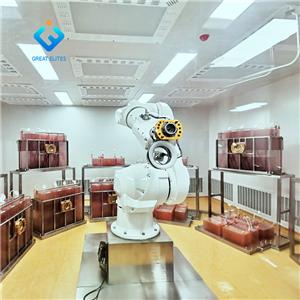Routine observation methods and precautions of cell culture
Routine observation methods and precautions of cell culture
After the cells are inoculated or subcultured, the experimenter should make routine examination of the cells every day or at most 1 ~ 2 days. Observe the morphology and growth of cells, as well as the pH change of culture, whether there is pollution, etc. According to the dynamic changes of cells, do fluid replacement or passage treatment. If abnormal conditions are found, take measures in time.
1. Cells with good morphological growth state can be seen under the general microscope, with large transparency, strong refraction and unclear outline. When cells grow poorly, the contour is enhanced, vacuoles, lipid droplets and other particles often appear in the cytoplasm, the gap between cells is enlarged, and the cell morphology is irregular or even loses its original characteristics, such as epithelial cells become epithelial like cells. When cells die, some dyes can combine with the disintegrated nuclear DNA through the denatured cell membrane and make them colored. Therefore, trypan blue is often used to identify dead and alive cells. Living cells do not stain, and dead nuclei are blue.
2. Cell growth after primary culture or inoculation of subcultured cell suspension, it began to proliferate after different incubation periods. Passage cell lines, embryonic tissues or larval tissues generally see cell growth on the next day and can be connected into pieces within a week. After the inoculated cells grow all over the bottle wall, they should be re cultured in time. Otherwise, due to nutrient consumption and metabolic accumulation, the cells will enter the stop or degradation period. At this time, the cell contour is enhanced, and granular deposits often appear in the cells, which are swollen mitochondria. The cytoplasm is vacuolized, and the cells become round and rough. In serious cases, the cells fall off the bottle wall. Only by subculturing in time can the cells continue to grow and reproduce.
3. Under normal conditions, the nutrient solution is peach red. If the cells are maintained at pH6.5 ~ 6.6, the cells will fall off and die. When the culture medium is acidified and turns yellow, it indicates that the metabolites in the culture medium have accumulated to a certain amount, and the fresh culture medium needs to be replaced. If HEPES is added to the culture medium or cultured in a 5%co2 incubator, the pH can be maintained relatively stable. The time of changing nutrient solution depends on the consumption of nutrients. When the cell grows vigorously, it can be changed every 2 ~ 3 days, and when the growth is slow, it can also be changed every 3 ~ 4 days. Special attention should be paid to that various cells have different requirements for pH value.
4. Microbial contamination after microbial contamination of cultured cell culture, the pH value will change, and the culture medium will appear turbid. After bacterial infection, due to the movement of bacteria, there is a slight flash under the light microscope; In fungal infection, many filamentous hyphae and sometimes clustered spores were seen under the microscope; Mycoplasma contamination can only be detected with the help of some detection methods. After cell contamination, it should generally be discarded. For important cell lines, you can refer to relevant monographs to introduce some measures to remove pollution. Important experiments and precious cells should be cultivated and operated by at least two experimenters independently, or by one person in several times (at different times). In addition to the sanitary conditions of the culture laboratory, the humidity in the air is closely related to microbial pollution. Important and long-term experiments should be carried out in autumn and winter when the air humidity is low.
Other precautions:
First, observe frequently to determine the cell state.
Second, whether to add antibiotics. This depends on the situation. In the process of cell culture, it is required to add as few irrelevant impurities as possible. Antibiotics are also a burden for cells.
Third, the thawing of fetal bovine serum. The serum is generally stored at - 20 ℃ and thawed in the refrigerator at 4 ℃, which takes a long time and needs to be thawed one day in advance.




